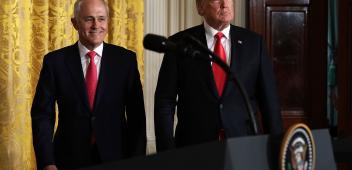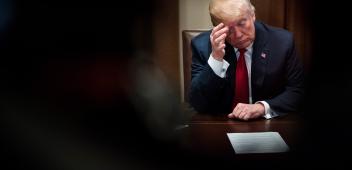Vital trade lessons from China’s failed attempt at coercion
Originally published in The Australian.

Australia has become the test case for how the world faces a more assertive China. Beijing has hit Australia with a barrage of trade sanctions of unprecedented breadth and obviousness of coercive intent. The rest of the world is watching, in no small part out of fear they could be next.
Yet, the most remarkable aspect of the experience so far is just how ineffective China’s attempted trade coercion has been.
Politically, Beijing’s efforts have clearly failed. The Australian government has predictably stood firm on the substantive policy issues that China has sought to change with no whiff that giving in can even be considered.
Economically, there has certainly been damage but to a far more modest extent than the prevailing narrative of Australia’s economic dependence on China would suggest.
It is not simply that the iron ore trade is booming. That will pass once China shifts away from its pandemic recovery stimulus and the temporarily shuttered Brazilian iron ore supplies come back online. The real story is that, if one looks at the specific Australian industries targeted by Beijing, most have been quite successful in redirecting their exports to other markets.
Start with the numbers. The total value of Australian exports to China that have been hit with coercive sanctions has certainly collapsed, dropping by just over $10bn in annualised terms since late 2020. Yet, the annualised value of those same exports to other markets has increased by $14bn.
The ongoing global recovery from the depths of the pandemic largely explains the outsized rise in exports to other markets. Nonetheless, a close commodity-by-commodity inspection suggests that a large part of the increase also reflects successful trade diversion. Probably not enough to offset all the damage from China’s trade coercion. But most of it.
Australia’s coal exports are higher than before China’s sanctions thanks to redirection to a recovering Indian economy in particular. Barley farmers have enjoyed a bumper crop, which has mostly gone to Saudi Arabia instead of China. Sharp increases in exports to other markets also point to largely successful trade diversion of copper and timber, and moderate success with seafood and cotton. Beef exports to China have broadly held up despite some trade sanctions. Wine is the only obvious point of weakness, given the difficulty of replacing the premium Chinese market.
This picture shouldn’t be a surprise. Trade diversion is exactly what economics tells us to expect. But it is comforting to see this playing out in practice. Of course, the process is not costless. Industries are disrupted and there is some loss in efficiency and reduced profit margins. However, the costs are much smaller than most probably feared.
China could, of course, go further. Hitting iron ore would be the nuclear option. But given the economic damage it would do to China itself, this is unlikely so long as substantial alternative supplies at competitive cost are unavailable.
China has already threatened Australia’s tourism and education industries. With the borders shut, this has been of little effect. But that could change post-pandemic. It is especially worrying for international education — Australia’s fourth-largest export — for which the loss of international students from China would not be easy to replace for Australian universities and other education providers.
Fortunately, education is one area where it is feasible for the government to intervene effectively to limit the damage. Unlike other China-exposed areas that are necessarily more market-driven, education is a non-market sector. It is heavily subsidised and regulated. There are also a limited number of players to co-ordinate. Sensible public policy can therefore be deployed to manage the problem.
China for its part should have strong incentives for more restraint going forward. Not only has China’s trade coercion proved ineffective but it is also imposing its own costs on Chinese firms, workers and consumers that will only escalate if Beijing goes further. It also has reputational costs that undermine China’s soft power. China looks plainly vindictive, as Australia’s ambassador to China has aptly put it.
More fundamentally, China can abuse its dominance of global trade only so much without undermining this as a source of its own global power and influence as firms and countries actively seek to reduce their exposure. Much like US financial sanctions which, while immensely powerful, if abused would risk undermining the global centrality of the US dollar itself.
Where does this leave Australia, especially when difficult relations with China appears to be the new normal? We are still feeling our way through this. But the experience thus far tells us a few things.
First, we need to avoid the tendency to panic. Australian businesses, the economy, and political institutions have all proved themselves resilient than many feared, especially before the sharp descent in bilateral relations.
Second, we should avoid overstating the impact of China’s trade coercion. This plays directly into Beijing’s hands, both within the Australian debate and abroad in third countries.
Finally, while we need to avoid unnecessary provocations, we should also be prepared to hold firm where our values and interests require it. If there is one silver lining to Beijing’s recent trade sanctions, it is that it has shown that it is possible to do so.
Roland Rajah is the director of the International Economy Program at the Lowy Institute.



